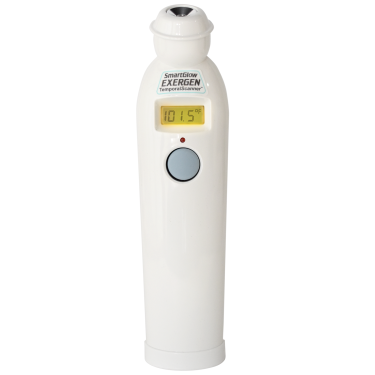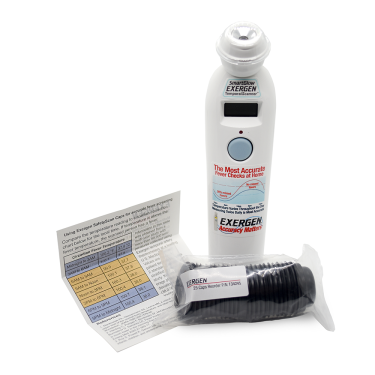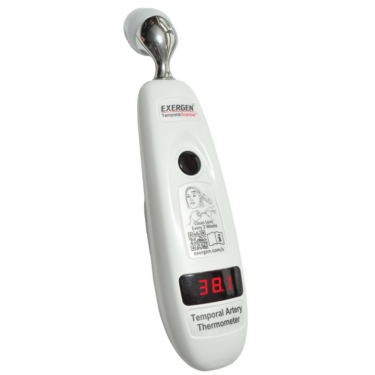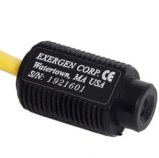Fever is one of the most common reasons parents reach for the thermometer. Whether it’s the middle of the night or a routine check after a vaccination, getting an accurate temperature reading is critical to understanding a child’s health. But with so many types of thermometers available—rectal, oral, ear, forehead—many caregivers are left wondering which option is best.
Recent guidance from the American Academy of Pediatrics (AAP) helps clarify the pros and cons of each, and points to one method in particular as a safe, effective, and user-friendly choice: the Temporal Artery Thermometer.
Traditional Thermometers are often Invasive and Uncomfortable
Traditionally, rectal thermometers have been considered the gold standard for infants under three months of age, due to their direct measurement of core body temperature. They are accurate, but also invasive, uncomfortable, and not ideal for repeated use, especially when a child is already feeling unwell.
Oral thermometers, another longstanding option, become more reliable around the age of four when children can consistently hold them in place under the tongue. But even then, cooperation and a calm environment are necessary for a reliable result something that isn’t always easy to achieve when a child is restless or anxious.
Tympanic thermometers, which measure the infrared heat emitted from the eardrum, offer faster results and are less invasive than rectal methods. However, their accuracy can be affected by earwax or improper placement, and their design is not well-suited for young infants, whose ear canals are often too small for consistent readings.
Highly Accurate and Non-Invasive
In recent years, many caregivers and healthcare professionals have turned to forehead thermometers, particularly those that scan the temporal artery like the Exergen Temporal Artery Thermometer. Unlike other infrared thermometers, which can be inconsistent depending on environmental factors or skin contact, the Exergen Temporal Artery Thermometer captures heat from the major artery located just 2 mm under the skin of the forehead. This artery carries blood directly from the heart, offering a reliable indicator of the core body temperature.
What sets the Temporal Artery Thermometer apart is the combination of speed, ease of use, and non-invasiveness. A simple scan across the forehead by gently touching it, delivers an accurate reading in 3 seconds. No need for a child to sit still with a device in their mouth or ear. This is especially useful when monitoring a sleeping child or when frequent temperature checks are necessary, such as during an illness. It also greatly reduces discomfort and stress for both children and parents.
Temporal Artery Thermometers are Appropriate for Children of all Ages
The AAP notes that forehead scanning using the temporal artery is appropriate for children of all ages. It’s also one of the few methods that bridges the gap between clinical accuracy and practical usability at home. This makes it an excellent option not only for concerned parents but also for schools, daycare centers, and pediatric practices seeking a reliable screening tool.
Given these advantages, it’s not surprising that many families now keep a Temporal Artery Thermometer within easy reach. In times when accurate health monitoring is essential, especially during flu season or outbreaks of contagious illnesses, a device that delivers fast, trustworthy readings with minimal effort can make a real difference.
For parents and caregivers looking to simplify the process of temperature taking without sacrificing precision, a high-quality temporal artery thermometer offers one of the best solutions available. Its combination of medical-grade accuracy, child-friendly operation, and speed makes it a practical choice for everyday use.
Source
- Healthy Children: https://www.healthychildren.org/English/health-issues/conditions/fever/Pages/How-to-Take-a-Childs-Temperature.aspx
Exergen P/N 850478





